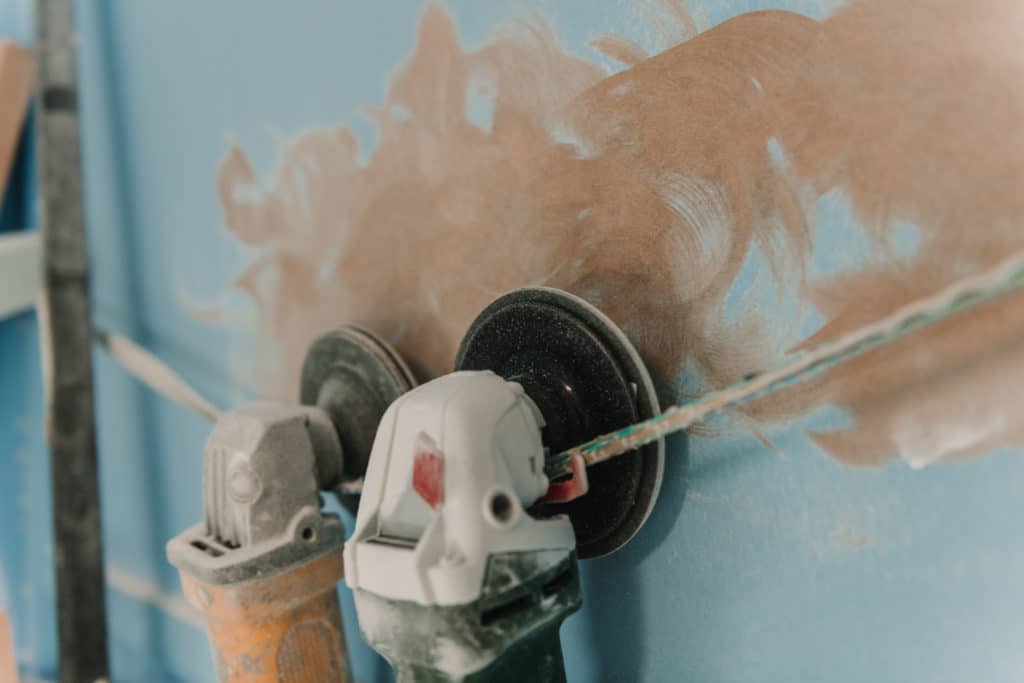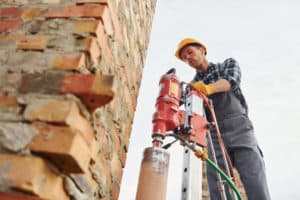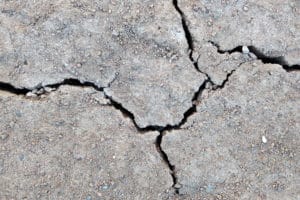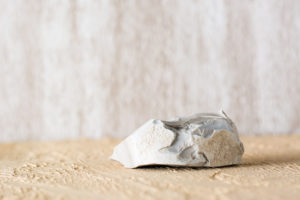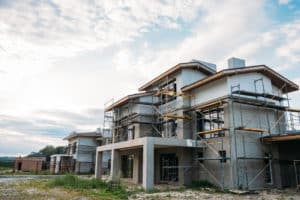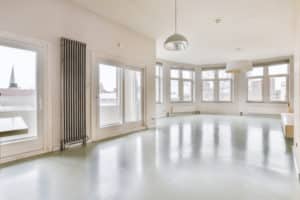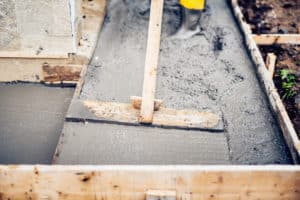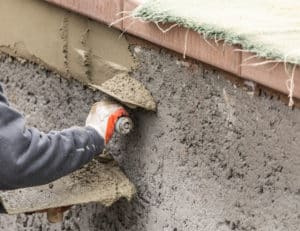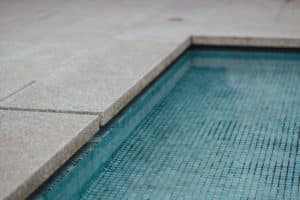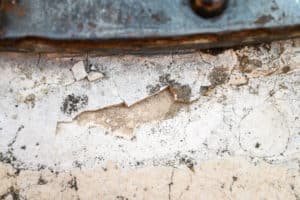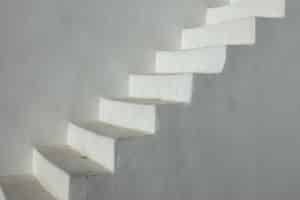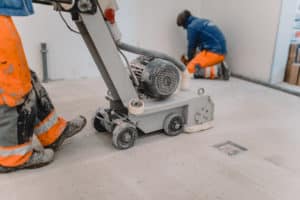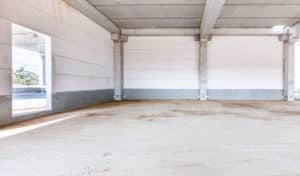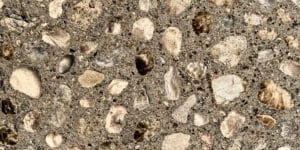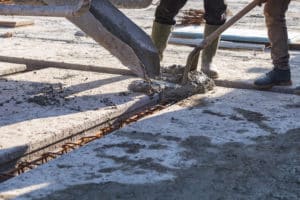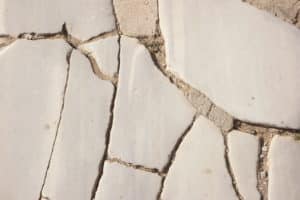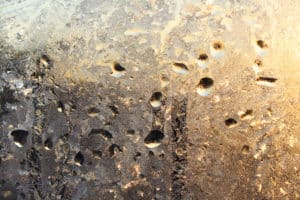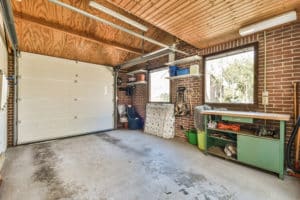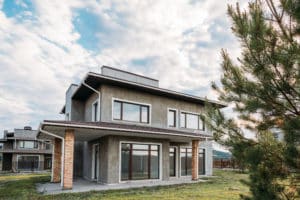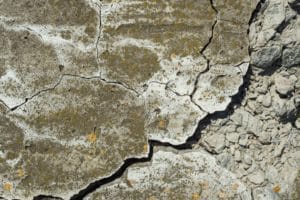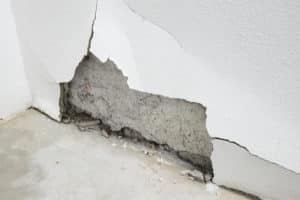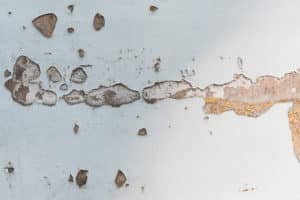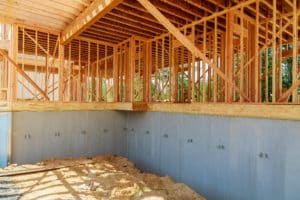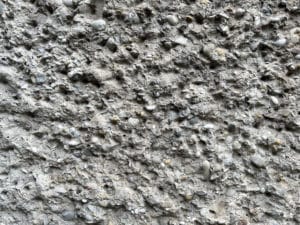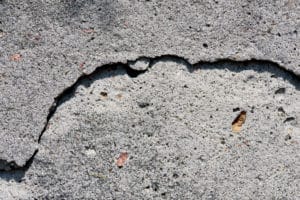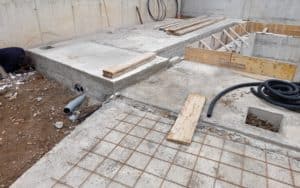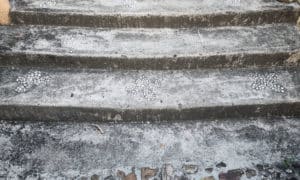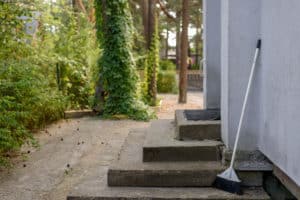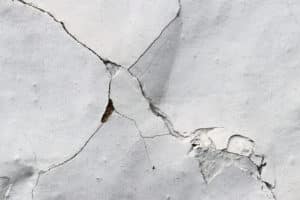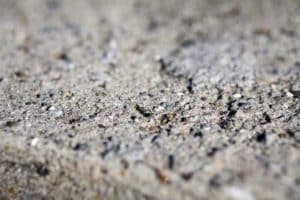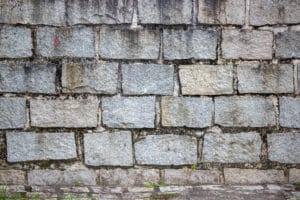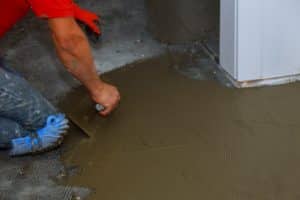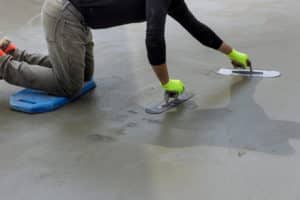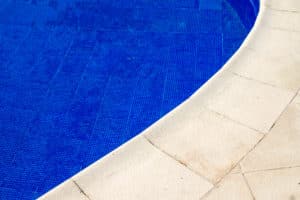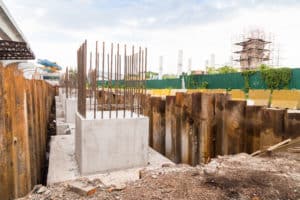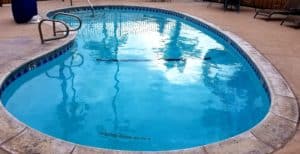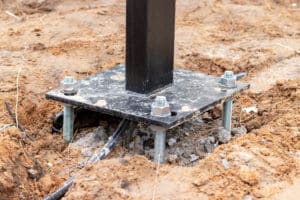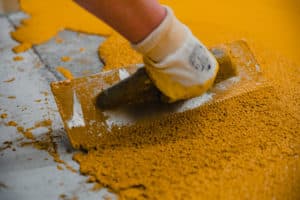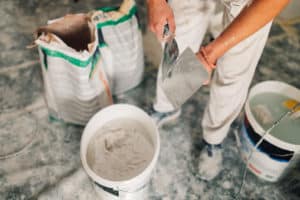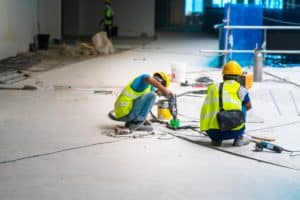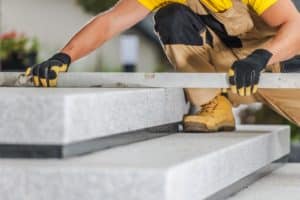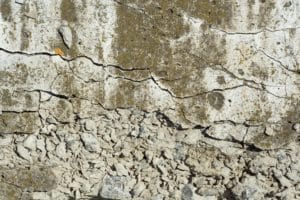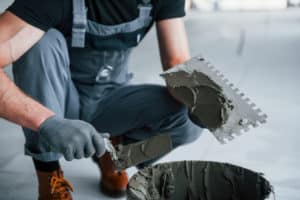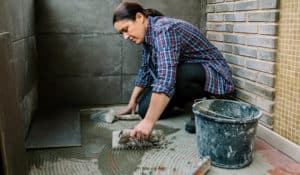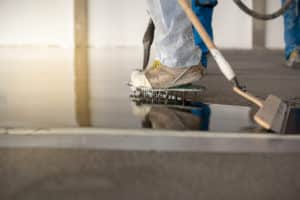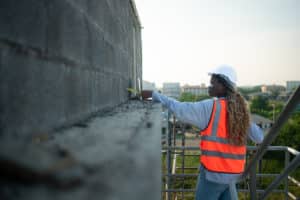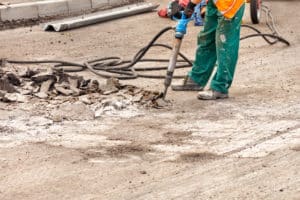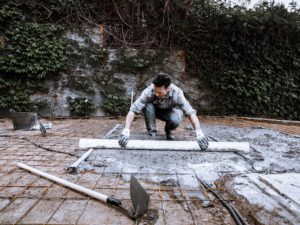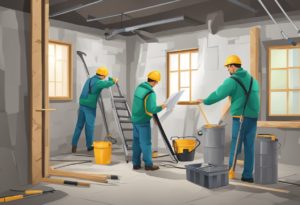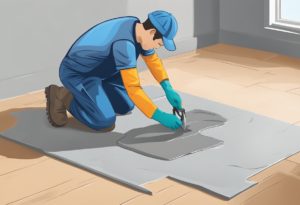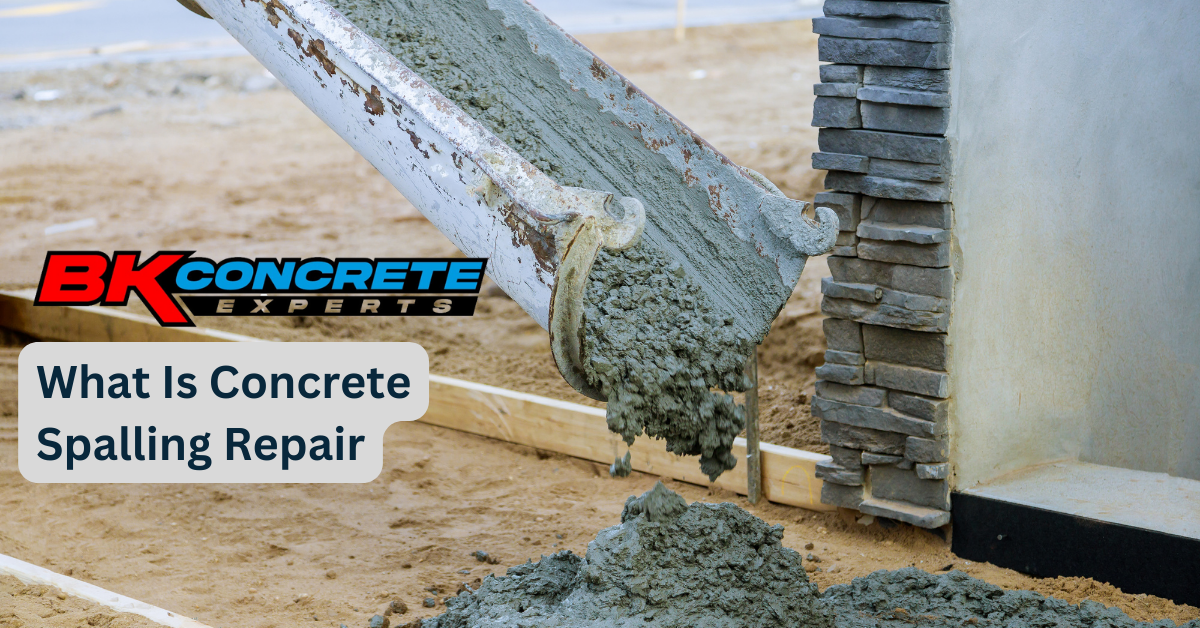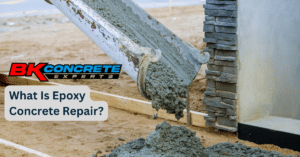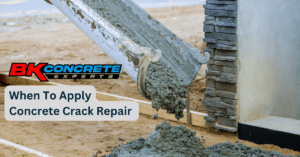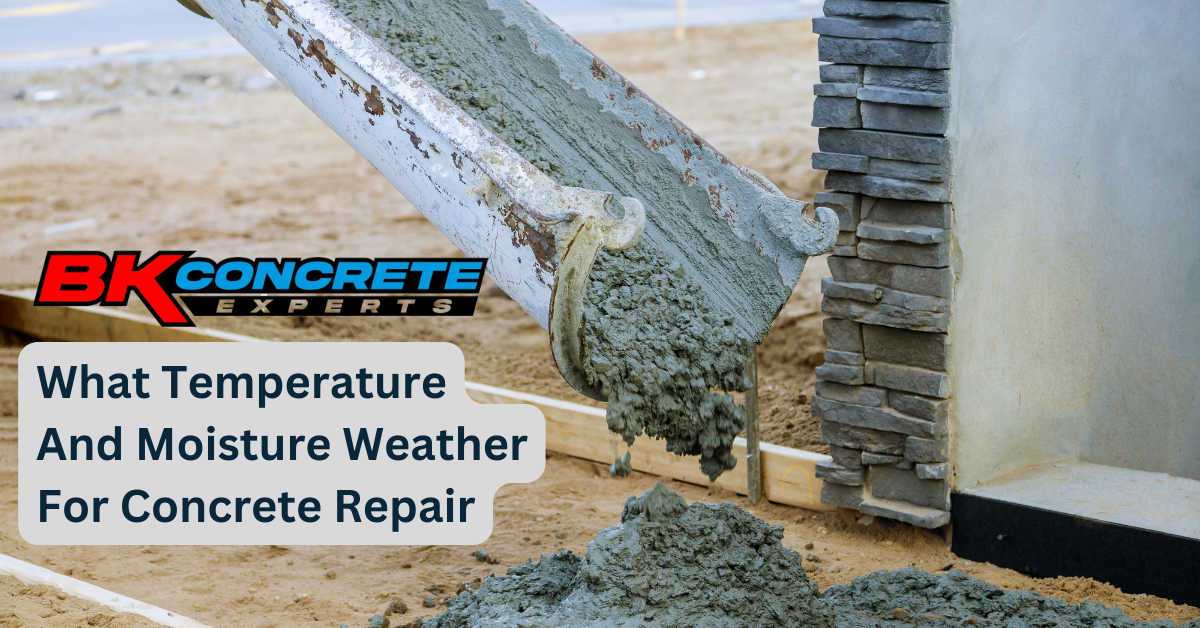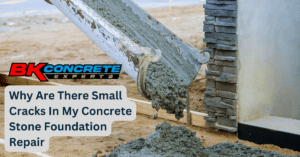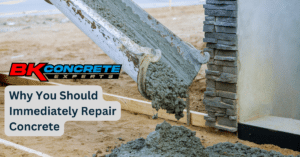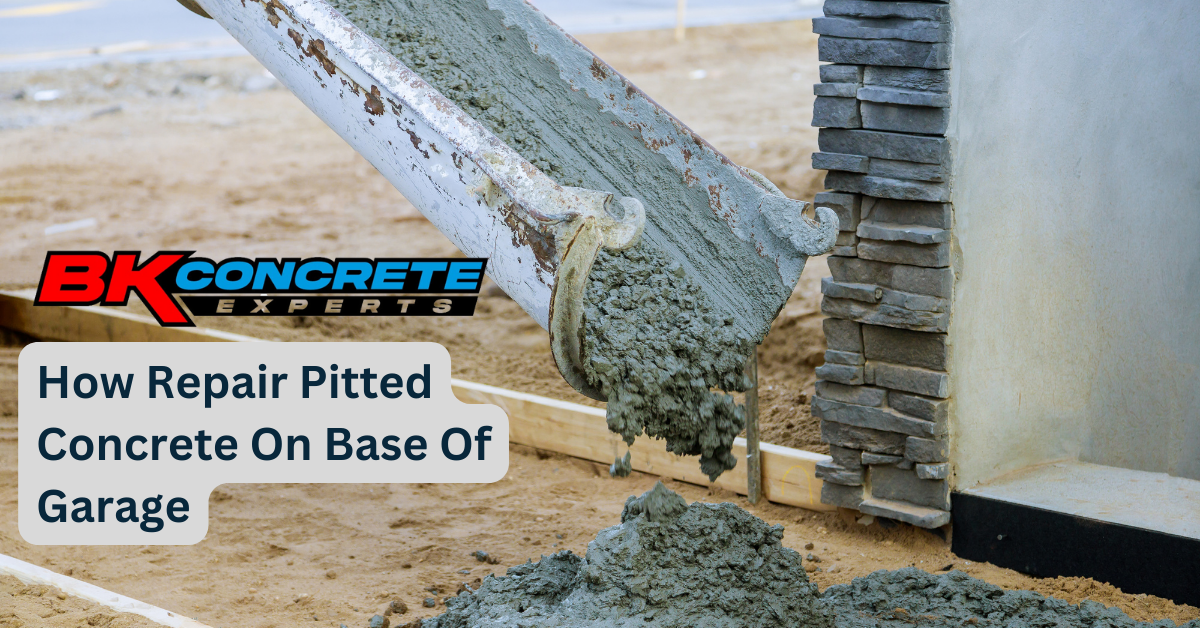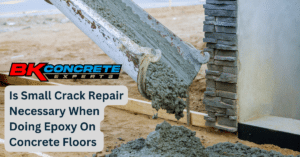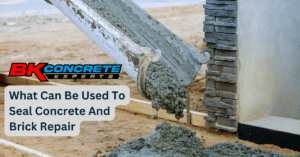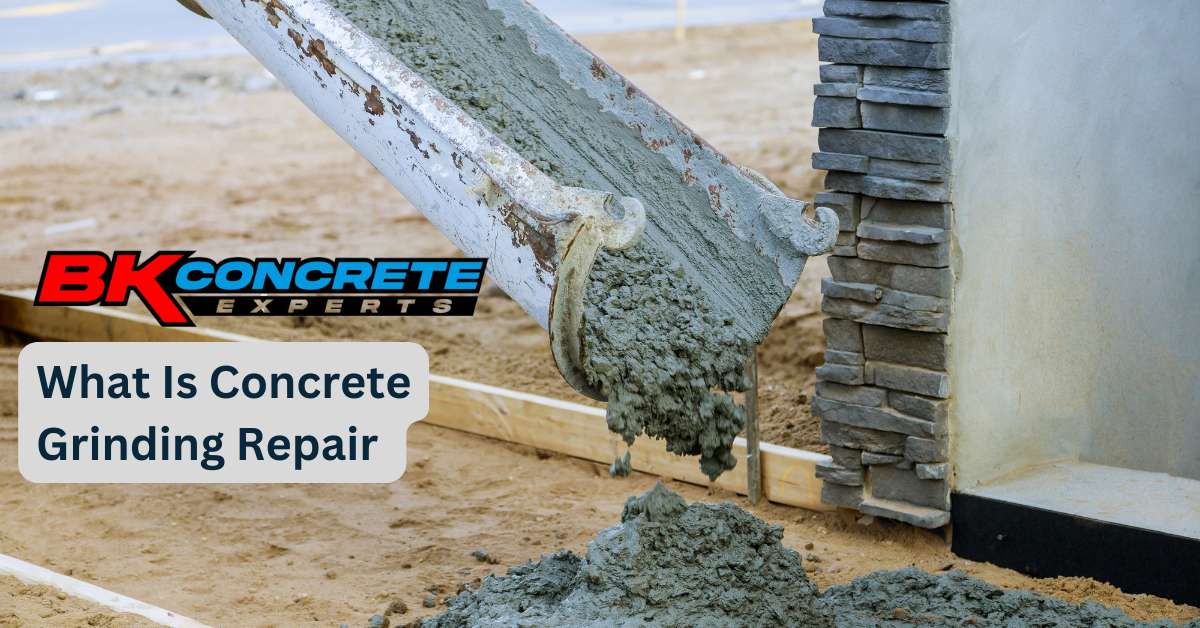Grinding a concrete floor is an essential preparation step before applying an epoxy coating. This process involves using specialized equipment to smooth and level the rough surface, thereby creating an ideal substrate for the epoxy to bond effectively. Properly ground floors ensure that the epoxy coating adheres strongly, reducing the potential for peeling or cracking over time. Moreover, grinding opens the pores of the concrete, which helps in the absorption of the epoxy, resulting in a more durable and long-lasting finish.
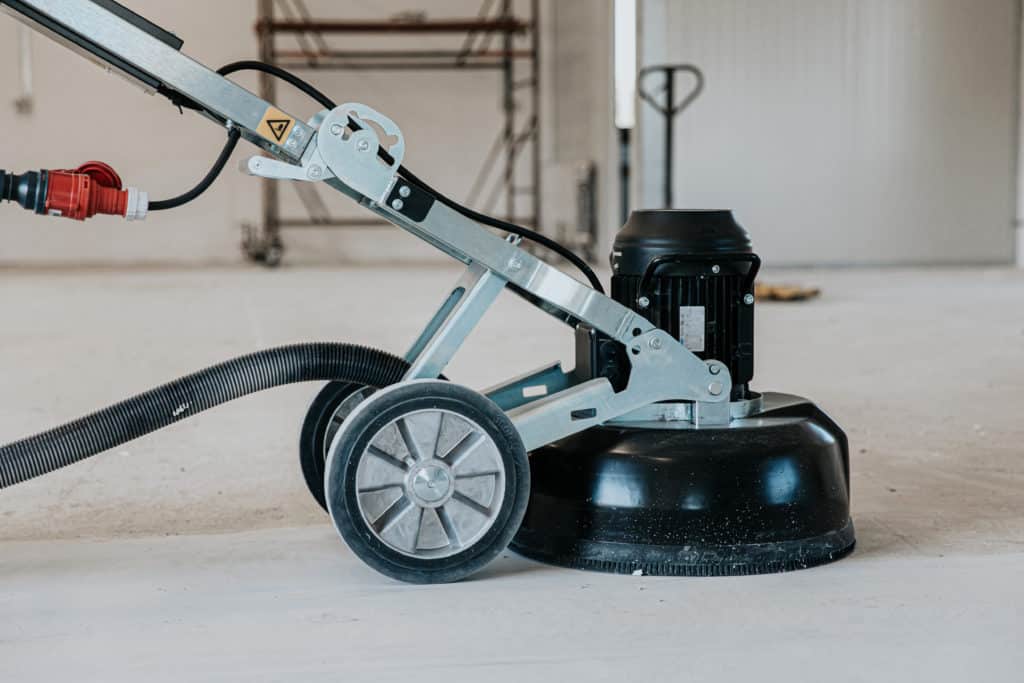
The technique of epoxy grinding is not a one-size-fits-all solution; it requires careful consideration of the concrete’s condition and the desired outcome of the epoxy application. Contractors typically use diamond grinders, which are powerful tools equipped with diamond-impregnated discs, to achieve a uniform surface texture. How to grid concrete floors for epoxy shows the detailed process and necessary tools for successful concrete floor grinding.
Choosing a suitable grinding method is paramount as it affects the longevity and appearance of the epoxy coating. For instance, lightly grinding the concrete can be the best approach for certain floors, as it cleans and profiles the concrete simultaneously. To acquire more insight into the equipment and methods for preparing a floor for epoxy, one can refer to Floor Grinding & Surface Preparation for Epoxy Floors. These preparatory measures, when done thoroughly, prevent issues with the final coated floor, delivering a sleek and professional finish.
Understanding the Basics of Epoxy Grinding
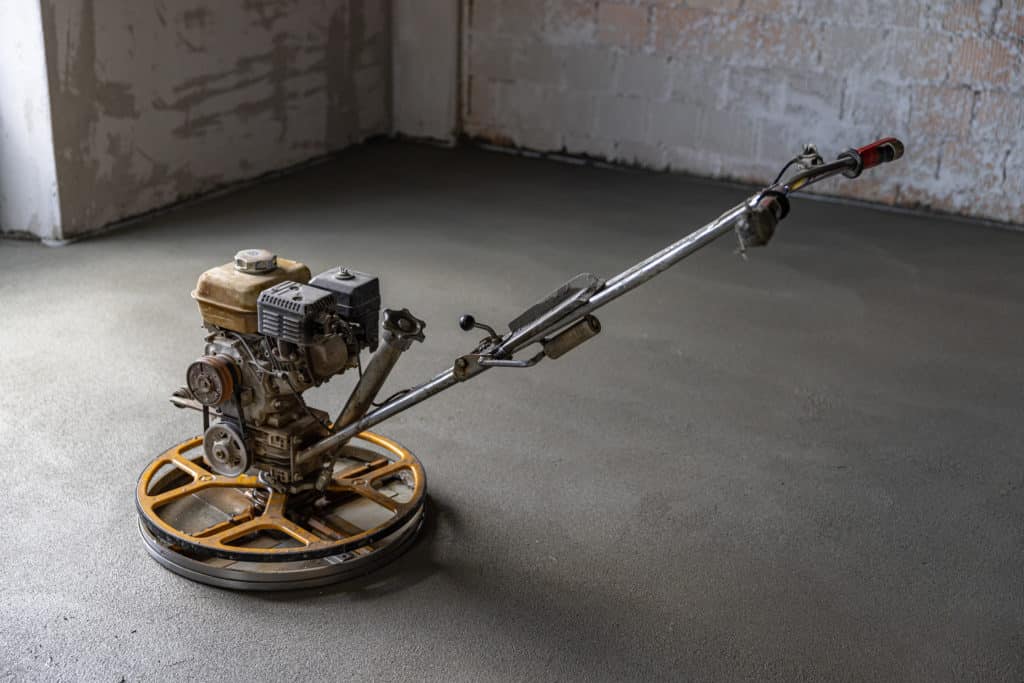
Epoxy grinding is an essential step in achieving a high-quality, durable epoxy floor. It involves preparing concrete surfaces to create an optimal foundation for epoxy coatings.
The Significance of Surface Preparation
Surface preparation is critical because it directly influences the adherence and longevity of an epoxy coating. Grinding a concrete surface ensures that it is free of defects, clean, and has the right texture to bond with the epoxy. Without proper preparation, epoxy coatings may not adhere correctly, leading to peeling or chipping.
- Cleaning: Remove dirt, grease, and existing coatings.
- Leveling: Flatten the surface to eliminate bumps or irregularities.
- Etching: Roughen the surface to improve epoxy adhesion.
Epoxy Coatings and Concrete Surfaces
Epoxy coatings require a concrete surface that is solid and porous enough to allow the epoxy to grip effectively. Grinding the surface with diamond abrasives is the preferred method to achieve this profile.
- Concrete condition: Must be cured, free from moisture and structurally sound.
- Grinding tools: Use tools according to the concrete’s hardness and the type of epoxy being applied.
- Technique: Opt for a gradual progression from coarser to finer grits to prepare the surface for epoxy flooring.
Through methodical grinding and attention to detail during the preparation phase, one can ensure that the epoxy flooring will be visually appealing and possess robust durability, thereby justifying the investment into both materials and labor.
Essential Equipment and Tools
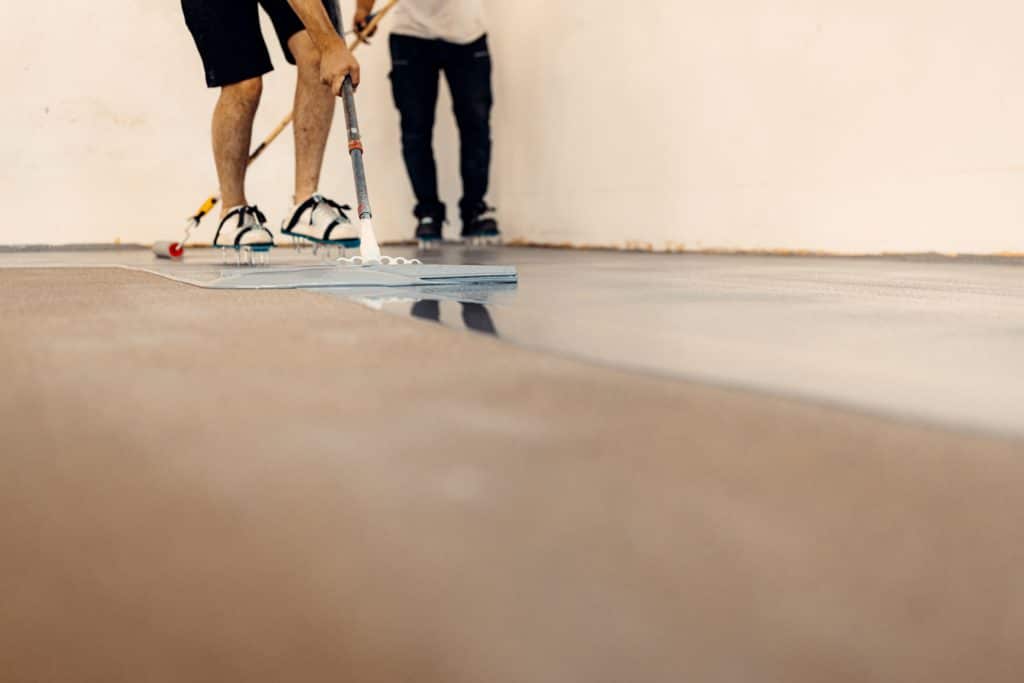
To achieve professional-grade results in epoxy flooring applications, it’s crucial to have access to the right set of tools. This includes durable floor grinders and a reliable vacuum system with robust attachments for efficient dust collection and surface preparation.
Selecting the Right Floor Grinder
When it comes to epoxy floor installations, the floor grinder is the foundation of surface prep. Ideal grinders should be powerful enough to handle various floor conditions and be user-friendly for extended periods of work. One should consider a grinder’s horsepower and its compatibility with diamond cup wheels to ensure it can effectively remove existing coatings and smooth out imperfections. For example, an angle grinder with a quality diamond cup wheel is excellent for both leveling and prepping small to medium floor areas.
Vacuums and Attachments Required
A vacuum system equipped with a HEPA filter is essential to maintain a clean work environment and minimize airborne dust. The vacuum should ideally connect to the grinder via a reliable dust shroud to efficiently capture debris as it’s generated. Additionally, having a variety of attachments, like different sizes of hoses and nozzles, enables adaptability to various job conditions and enhances the effectiveness of the dust collection system. A comprehensive setup ensures compliance with safety standards and promotes a dust-reduced working space.
Step-by-Step Grinding Process
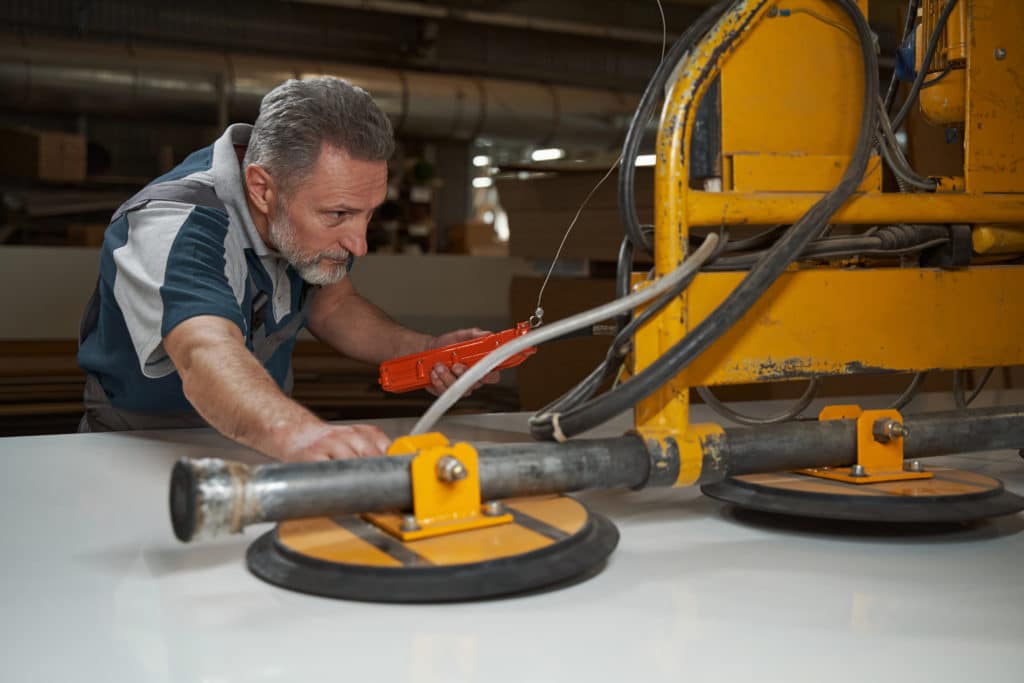
Before applying an epoxy coating, it’s essential to thoroughly prepare the concrete floor through a process of grinding. This not only ensures optimal adhesion but also contributes to the longevity and aesthetic quality of the flooring.
Preparing the Concrete Floor
Initial Preparation:
- Remove all items from the floor, including furniture, fixtures, and any obstructions.
- Thoroughly clean the floor to eliminate dust, debris, and contaminants that may impede the grinding process.
- Inspect the concrete for cracks, imperfections, or coatings that could affect the grinding process.
- Consider shot blasting or acid etching as alternative methods when dealing with floors not suitable for grinding.
Executing the Grinding Method
Grinding Equipment Setup:
- Attach a coarse-grit diamond grinding disc to the concrete grinder.
- Set up the grinder according to the manufacturer’s instructions to ensure it operates at peak efficiency.
Grinding Process:
- Start grinding the concrete floor by moving the grinder in a controlled manner, maintaining a smooth, even pattern to avoid creating troughs or ridges.
- Multiple passes may be required, increasing the grit of the diamond disc as you proceed to achieve a smooth finish.
Post-Grinding Cleanup:
- Remove all grinding debris and dust to prepare for the epoxy application.
- Ensure the floor is level and the desired smoothness is achieved before proceeding.
By methodically performing each step, one can efficiently execute the grinding method, ensuring that the concrete floor is suitably prepped for the subsequent application of an epoxy coating.
Technical Aspects of Grinding
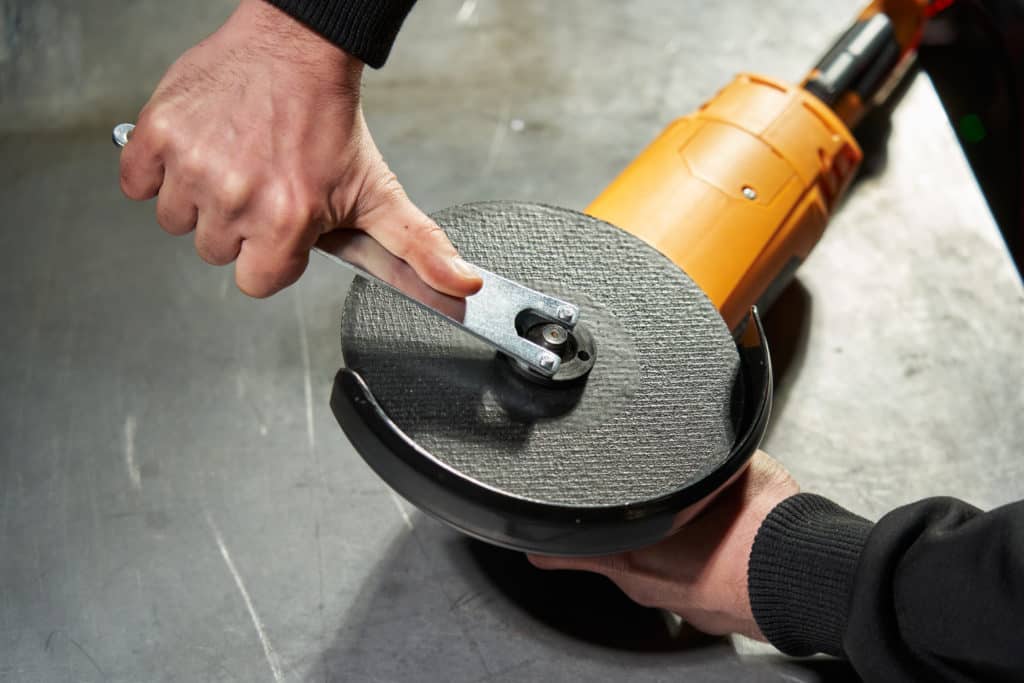
In the process of preparing floors for epoxy coatings, understanding the technical aspects of grinding is crucial for achieving a smooth and suitable surface. Grinding is not just about smoothing; it also cleans and levels the concrete.
Understanding Gits and Tooling
Grinding concrete involves the use of various grits and tooling. Grit refers to the abrasive quality of the pads and discs used for grinding, which are categorized by their coarseness levels. Lower grit numbers signify coarser abrasives that yield faster removal of surface material but a rougher finish. Higher grit numbers correspond to finer abrasives resulting in a smoother finish. A typical progression begins with coarser grits like 30/40 for initial grinding, moving up to 80/100 grits for finishing, and finally 150+ for polishing.
Tooling encompasses the different pads and discs that attach to grinding machinery. Diamond tooling is a common choice due to its durability and capability to efficiently cut through hard concrete surfaces. It is essential to choose the correct type of tooling to match the hardness of the concrete and the desired finish.
- Selecting Grits and Tooling:
- Start with coarser grits for leveling and removing coatings.
- Move to finer grits for a smooth, polished surface.
- Match tooling to the concrete’s hardness and the job requirements.
Safety Measures During Grinding
The safety of the operator and those in the vicinity is paramount when grinding concrete. Due to the nature of the grinding process, it generates dust particles that can be harmful if inhaled. Wearing a suitable respirator is non-negotiable to protect against silica dust and other airborne particles. Additionally, operators should use ear protection to guard against the noise from the grinding machinery.
Personal protective equipment (PPE) should include:
- Respirator or dust mask rated for concrete dust.
- Ear protection to minimize hearing damage from machinery noise.
- Protective eyewear to shield against flying debris.
- Durable gloves to protect hands during equipment handling.
Lastly, ensure the machinery used for grinding is well-maintained and has the appropriate dust containment systems in place to minimize exposure to airborne particles. Regular maintenance of the machinery not only improves safety but also ensures consistent performance and longevity of the equipment.
Aftercare and Maintenance
Proper aftercare and maintenance are crucial for preserving the integrity of an epoxy floor and ensuring it maintains its glossy finish. Regular cleaning and timely attention to spills are key to the longevity of the coating.
Cleaning the Ground Surface
To clean an epoxy surface, one should consistently engage in routine maintenance. This involves sweeping to remove loose particles and then mopping with a mild detergent, such as Simple Green, to keep the surface free from dirt and residue. For spill management, it is imperative to wipe up any substances immediately to prevent staining and to ensure the surface’s glossy appearance.
Maintaining Epoxy Flooring
Maintaining epoxy flooring goes beyond just day-to-day cleaning, it includes protecting the surface from heavy wear and tear. This means waiting at least 24 hours before allowing light foot traffic and a further 24 hours before driving on the surface, which gives the coating sufficient time to cure and bond to the concrete substrate. The use of soft cloths or microfiber pads during cleaning can prevent scratches and preserve the floor’s luster. Regular inspections for any signs of wear or damage are advisable, to ensure any repairs can be undertaken quickly to restore the surface integrity.


